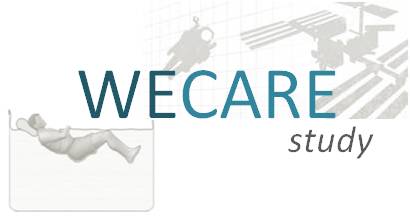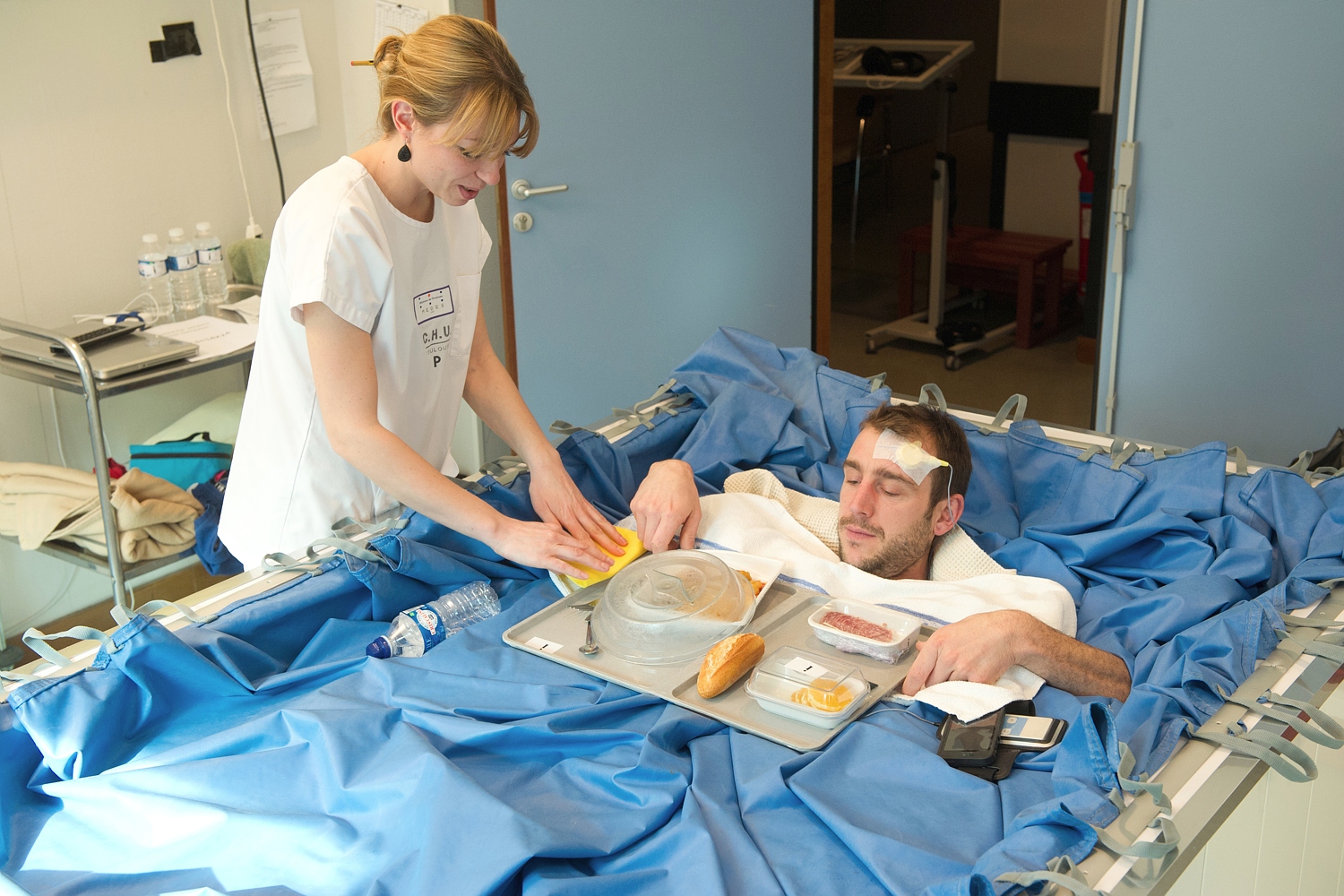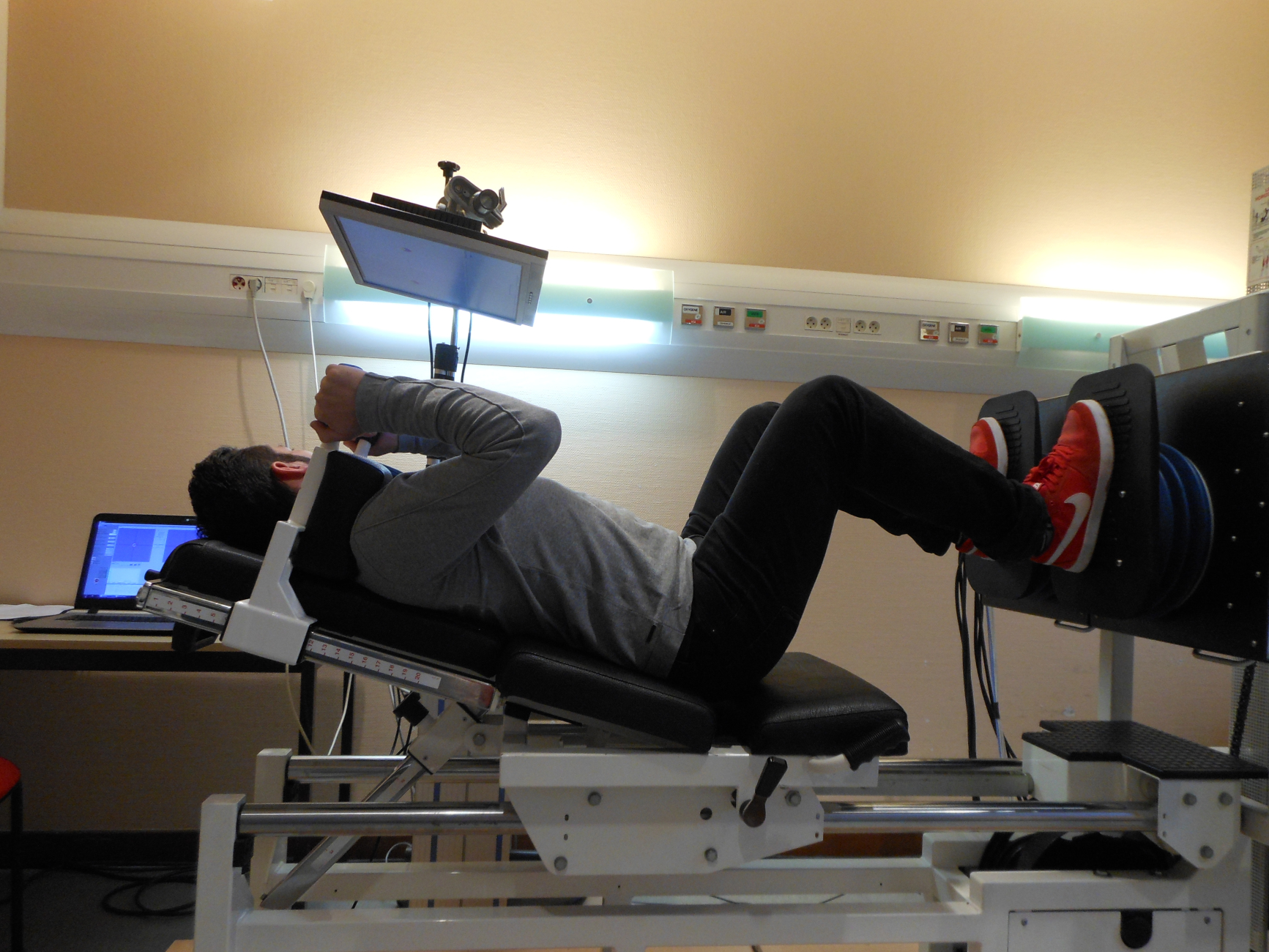Date :
2016
State of progress :
Ended
Objectives :
Dry immersion study and Physical countermeasure study (Wecare device)
Partners :
ESA, CNES, Quinetic Space
MEDES conducted a study on behalf of ESA to test a new countermeasure (preventive method) to ensure the health of astronauts: the WECARE device. The device was tested in the context of a study simulating weightlessness, using the dry immersion model, which had recently been installed in the Space Clinic premises (first study carried out in 2015).
The device was designed by Qinetic Space and MEDES under an ESA contract.

For this study, the dry immersion weightlessness simulation model was used. The volunteer is “immersed” for three days in a kind of bathtub and is isolated from the water by a waterproof sheet.
This position simulates the effects that an astronaut may experience during space flight and reproduces many of the negative effects imposed by weightlessness on the body.
The WECARE device is a countermeasure (preventive method) to prevent and limit these negative effects. It combines physical exercise on a horizontal leg press, which causes the whole body to vibrate and enables proprioceptive training of the ankles.


Objectives of the study
Designed for ESA with the support of CNES, the device aims to combat bone demineralisation and muscle wasting in astronauts during space flight and to maintain their proprioceptive capacities.
The device is designed as a set of two active pedals that act as support platforms for the arches of the subject’s feet.
It allows two types of mechanical stress to be applied:
- Vibrations to combat bone demineralisation,
- Rotational movements in the arches of the feet while the subject performs knee flexion-extension exercises. This stress aims to maintain the subjects’ proprioceptive capacities and their ability to stand upright and keep their balance after the simulation.
The volunteers use the device for 45 minutes a day in a supine position. Six volunteers took part in the study, which ended on Friday 1 July.
The results will help to establish the usefulness of this type of prevention and its possible future implementation.
More information…
Why simulate the effects of weightlessness on the ground?
Experiments simulating the effects of weightlessness are carried out on the ground to gain a better understanding of the mechanisms by which the human body adapts to weightlessness, to prepare for space flights and to develop means of preventing (known as countermeasures) the negative effects of weightlessness.
What is the dry immersion model?
This model, developed and used by Russian scientists, was used for the first time by MEDES on 12 healthy subjects at the beginning of 2015.
This ‘dry immersion’ model is interesting because it induces physiological effects that cannot be faithfully reproduced by the other simulation model more widely used to date, the ‘bed rest’ model, and ‘dry immersion’ therefore complements it.

Nos actualités
Nos projets
Une question ?
Devenir volontaire ?
Nos études cliniques
Urgent ! Recrutement volontaires
